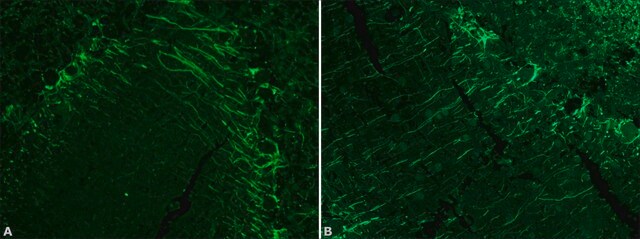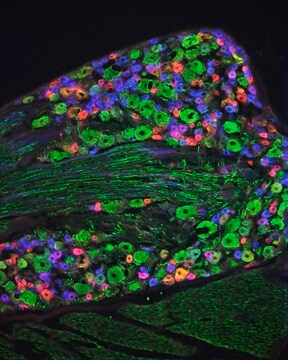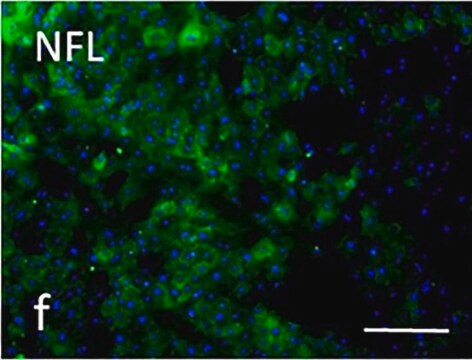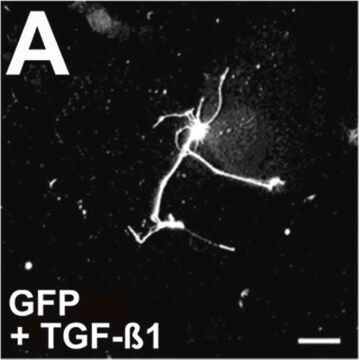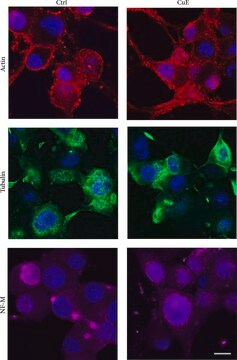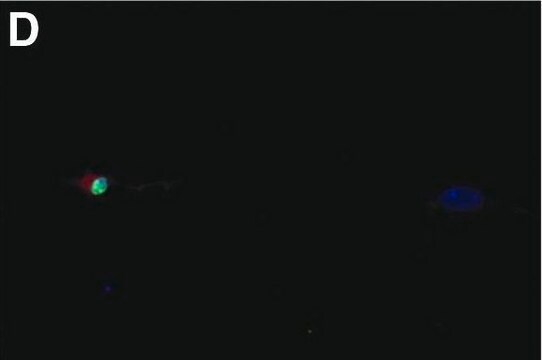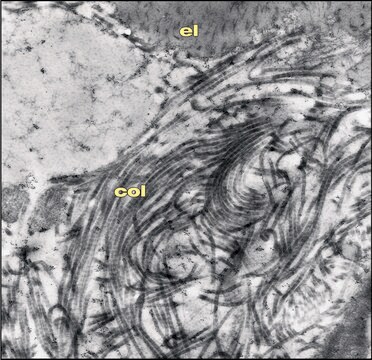N5139
Monoclonal Anti-Neurofilament 68 antibody produced in mouse
clone NR4, ascites fluid
Sinónimos:
Monoclonal Anti-Neurofilament light chain
About This Item
Productos recomendados
origen biológico
mouse
Nivel de calidad
conjugado
unconjugated
forma del anticuerpo
ascites fluid
tipo de anticuerpo
primary antibodies
clon
NR4, monoclonal
mol peso
antigen apparent mol wt 68 kDa
contiene
15 mM sodium azide as preservative
reactividad de especies
chicken, rat, pig, human
técnicas
immunohistochemistry (formalin-fixed, paraffin-embedded sections): 1:40 using rat cerebellum
microarray: suitable
western blot: 1:500 using bovine spinal cord neurofilament
isotipo
IgG1
Nº de acceso UniProt
Condiciones de envío
dry ice
temp. de almacenamiento
−20°C
modificación del objetivo postraduccional
unmodified
Información sobre el gen
human ... NEFL(4747)
Descripción general
Especificidad
Inmunógeno
Aplicación
- in immunohistochemistry
- in immunoblotting
- in western blotting
Acciones bioquímicas o fisiológicas
Cláusula de descargo de responsabilidad
¿No encuentra el producto adecuado?
Pruebe nuestro Herramienta de selección de productos.
Opcional
Código de clase de almacenamiento
12 - Non Combustible Liquids
Clase de riesgo para el agua (WGK)
WGK 1
Punto de inflamabilidad (°F)
Not applicable
Punto de inflamabilidad (°C)
Not applicable
Elija entre una de las versiones más recientes:
¿Ya tiene este producto?
Encuentre la documentación para los productos que ha comprado recientemente en la Biblioteca de documentos.
Los clientes también vieron
Nuestro equipo de científicos tiene experiencia en todas las áreas de investigación: Ciencias de la vida, Ciencia de los materiales, Síntesis química, Cromatografía, Analítica y muchas otras.
Póngase en contacto con el Servicio técnico